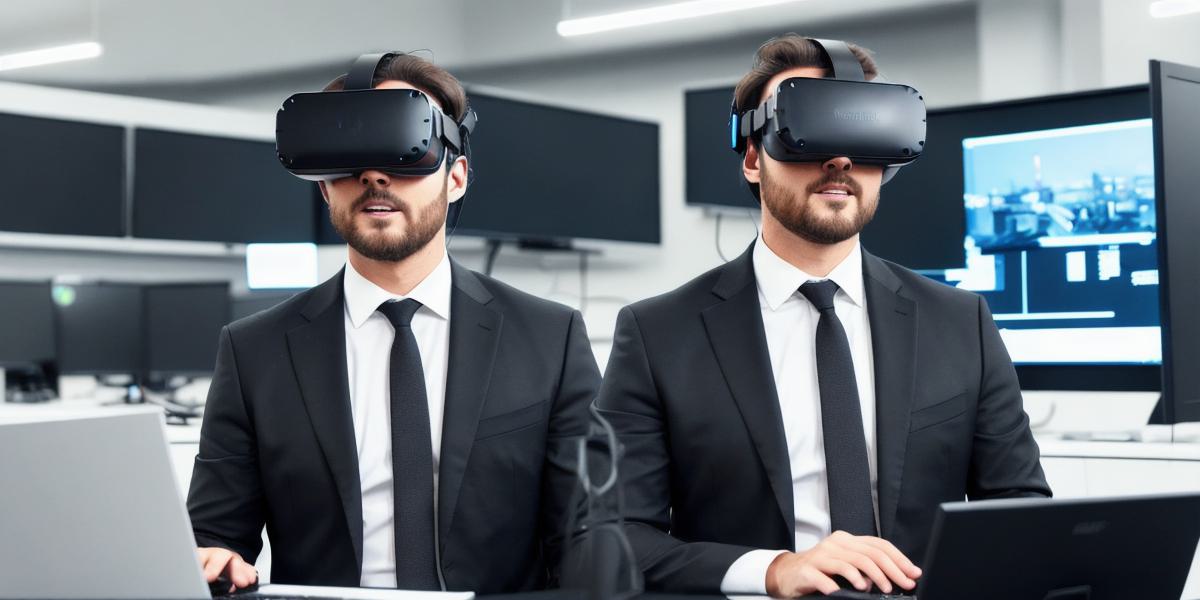As virtual reality (VR) technology continues to evolve, there is a growing demand for skilled developers who can create immersive experiences that transport users into new worlds. One of the most exciting and innovative areas of VR development is augmented reality (AR), which combines real-world elements with computer-generated graphics to create interactive, engaging experiences. In this article, we will explore how you can learn AR and VR, from the basics to more advanced topics.
Getting Started with AR and VR
Before diving into the technical aspects of AR and VR development, it’s important to understand what these technologies are and how they work. Augmented reality is a technology that overlays digital information onto the real world, creating an enhanced version of reality. For example, if you use an AR app on your phone while standing in front of a building, you might see additional information about the building or a virtual object that appears to be part of the building. Virtual reality, on the other hand, is a technology that creates completely artificial environments for users to explore and interact with.
There are many resources available online for learning the basics of AR and VR development, including tutorials, videos, and courses. Some popular platforms for learning AR and VR include Unity, Unreal Engine, and A-Frame. These platforms provide a range of tools and resources to help you get started with AR and VR development, from creating your first virtual environment to building more complex experiences.
Intermediate AR and VR Development
Once you have a basic understanding of AR and VR development, it’s time to start diving deeper into the technical aspects of these technologies. One of the most important skills for AR and VR developers is understanding how to create realistic and immersive environments that transport users into new worlds. This requires a strong understanding of 3D modeling, animation, and texturing, as well as knowledge of programming languages like C or JavaScript.
Another key aspect of AR and VR development is understanding how to integrate real-world elements with virtual objects. This can involve using sensors and other hardware to track the user’s location and movements in real time, and then using this data to adjust the virtual environment accordingly. For example, if a user is standing in front of a building while wearing an AR headset, the virtual object that appears on their screen might be affected by the position and orientation of the building.
Advanced AR and VR Development
As you become more proficient in AR and VR development, there are many advanced topics to explore. One area of particular interest is the use of artificial intelligence (AI) and machine learning (ML) in AR and VR experiences. By integrating AI and ML into your virtual environments, you can create intelligent, adaptive experiences that respond to user input in real time.
Another exciting area of AR and VR development is the use of haptic feedback technologies, which allow users to feel sensations in their environment. For example, a user might feel a vibration on their hand when they interact with a virtual object in an AR experience. This can create a more immersive and realistic experience for the user, and has many applications in fields like gaming, education, and training.
FAQs
- What tools do I need to start learning AR and VR development?
There are many tools available online for learning AR and VR development, including Unity, Unreal Engine, and A-Frame. These platforms provide a range of resources to help you get started, from creating your first virtual environment to building more complex experiences.
- How do I create realistic and immersive environments in AR and VR?
Creating realistic and immersive environments in AR and VR requires a strong understanding of 3D modeling, animation, and texturing, as well as knowledge of programming languages like C or JavaScript. You will also need to integrate real-world elements with virtual objects using sensors and other hardware.
- What are some advanced topics in AR and VR development?
Some advanced topics in AR and VR development include the use of artificial intelligence (AI) and machine learning (ML), haptic feedback technologies, and creating interactive experiences that respond to user input in real time.
